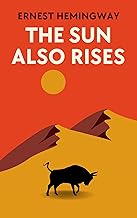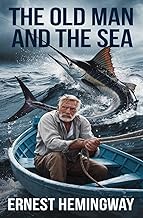
How to Read Ernest Hemingway's Books on Essential reads
How to Read Ernest Hemingway's Books on Essential Reads
Estimated Reading Time: 10-12 minutes
Introduction
Ernest Hemingway, one of the most influential writers of the 20th century, is renowned for his distinct writing style and profound exploration of the human condition. Born in 1899 in Oak Park, Illinois, Hemingway's life was marked by adventure, war, and a relentless pursuit of authenticity in both his writing and his experiences. His unique perspective on themes of love, loss, courage, and the search for meaning resonates deeply within the realm of essential reads.
Hemingway's works reflect a post-World War I disillusionment that shaped an entire generation, capturing the essence of what it means to be human in a world fraught with chaos and uncertainty. His sparse prose and understated narratives invite readers to engage with complex emotions and philosophical questions, making his literature not just stories but essential explorations of life itself.
Why Ernest Hemingway's Perspective Matters
Hemingway's approach to literature is characterized by his "iceberg theory," where the deeper meanings of a story lie beneath the surface of the text. This technique allows readers to engage with the narrative on multiple levels, encouraging introspection and personal interpretation. Unlike many of his contemporaries, Hemingway's focus on the individual's struggle against external and internal conflicts provides a unique lens through which to view essential themes in literature.
His insights into the human experience, particularly in the context of war, love, and existentialism, have left a lasting impact on literature and philosophy. Hemingway's works challenge readers to confront their own beliefs and emotions, making them not just stories to be read but essential texts to be contemplated and lived.
Overview of Recommended Books
The Sun Also Rises
Main Themes and Arguments: "The Sun Also Rises" is a poignant exploration of the "Lost Generation," a term used to describe those who came of age during World War I. The novel follows a group of expatriates in Europe as they grapple with the disillusionment and aimlessness that followed the war. Themes of masculinity, love, and the search for meaning permeate the narrative, encapsulating the struggles of a generation.
Historical Context and Significance: Published in 1926, the novel reflects the post-war disillusionment experienced by many young adults who felt disconnected from traditional values and societal expectations. Hemingway's firsthand experiences as a war correspondent lend authenticity to the characters' struggles.
Key Insights and Takeaways:
- The Search for Identity: The characters' journeys reflect the quest for self-understanding in a fractured world.
- The Impact of War: The psychological scars of war shape the characters' relationships and outlooks on life.
- The Nature of Love: Hemingway explores the complexities of love and desire, often highlighting its transient nature.
Why Read This Book: "The Sun Also Rises" is essential for understanding the disillusionment of the post-war era and the quest for meaning in a chaotic world. It appeals to readers interested in themes of identity, love, and the human condition, making it a foundational text in American literature.
A Farewell to Arms
Main Themes and Arguments: "A Farewell to Arms" is a semi-autobiographical novel that delves into the horrors of World War I through the eyes of an American ambulance driver in the Italian army. The narrative explores themes of love, loss, and the futility of war, presenting a stark contrast between the beauty of human connection and the brutality of conflict.
Historical Context and Significance: Published in 1929, the novel reflects Hemingway's own experiences in the war, offering a raw and unfiltered perspective on the impact of violence and trauma. It captures the emotional and psychological toll of war on individuals and relationships.
Key Insights and Takeaways:
- The Illusion of Glory: The novel critiques the romanticism of war, revealing its devastating realities.
- Love as a Refuge: The relationship between the protagonist and Catherine Barkley serves as a sanctuary amidst chaos.
- The Nature of Suffering: Hemingway poignantly illustrates the inevitability of suffering and loss in life.
Why Read This Book: "A Farewell to Arms" is a profound exploration of love and war, making it essential for understanding the complexities of human relationships in times of crisis. It resonates with readers seeking a deeper understanding of the emotional landscape of war and its aftermath.
The Old Man and the Sea
Main Themes and Arguments: In "The Old Man and the Sea," Hemingway tells the story of Santiago, an aging fisherman who embarks on an epic struggle against a giant marlin. This novella explores themes of perseverance, dignity, and the relationship between man and nature, encapsulating the essence of the human spirit.
Historical Context and Significance: Published in 1952, the novella reflects Hemingway's own struggles with aging and creativity. It won the Pulitzer Prize and is considered one of his most enduring works, symbolizing the timeless battle between man and the forces of nature.
Key Insights and Takeaways:
- The Value of Persistence: Santiago's relentless pursuit of the marlin embodies the idea that true victory lies in the struggle itself.
- The Connection to Nature: The novella emphasizes the profound relationship between humans and the natural world, highlighting themes of respect and humility.
- The Nature of Defeat: Santiago's ultimate defeat serves as a meditation on the inevitability of loss and the importance of resilience.
Why Read This Book: "The Old Man and the Sea" is essential for understanding the themes of struggle and dignity in the face of adversity. It appeals to readers seeking inspiration and insight into the human condition, making it a timeless classic.
How These Books Complement Each Other
Hemingway's three works build upon each other, creating a rich tapestry of themes related to the human experience. "The Sun Also Rises" introduces readers to the disillusionment of the post-war generation, while "A Farewell to Arms" deepens the exploration of love and loss within the context of war. "The Old Man and the Sea" then shifts focus to individual struggle and resilience, providing a broader understanding of the human spirit's capacity to endure.
Together, these works offer a comprehensive view of essential themes such as identity, love, suffering, and the quest for meaning, making them invaluable for anyone seeking to understand the complexities of life.
Who Would Benefit from Reading These Books
These books are ideal for a diverse audience:
- Students and Academics: Those studying literature, history, or philosophy will find rich material for analysis and discussion.
- General Readers: Anyone interested in the human experience and the exploration of essential themes will appreciate Hemingway's insights.
- Professionals Seeking Practical Wisdom: Individuals in high-stress environments can draw inspiration from Hemingway's exploration of resilience and perseverance.
- Anyone Looking for Personal Growth: Readers seeking to understand themselves and their relationships will find valuable lessons in these texts.
Recommended Reading Order
- Start with: The Sun Also Rises - This foundational text sets the stage for understanding the disillusionment of the post-war generation.
- Continue with: A Farewell to Arms - Building on the themes of love and loss, this novel provides a deeper exploration of the impact of war.
- Advanced reading: The Old Man and the Sea - Concluding with this novella offers a powerful reflection on struggle and dignity, rounding out the exploration of essential themes.
Tips for Getting the Most Out of Each Book:
- Take notes on key themes and personal reflections while reading.
- Discuss the books with others to gain different perspectives.
- Reflect on how the themes resonate with your own life experiences.
Conclusion
Ernest Hemingway's contributions to literature are profound and enduring, offering essential insights into the human condition. His exploration of love, loss, and resilience invites readers to engage deeply with their own experiences and emotions. By immersing yourself in these works, you not only gain a greater understanding of Hemingway's perspective but also enrich your own journey through the complexities of life.
Dive into these essential reads and allow Hemingway's timeless wisdom to inspire and challenge you. Whether you are a newcomer to his work or revisiting these classics, the journey through Hemingway's literature promises to be both enlightening and transformative.
Tags: #Ernest Hemingway #Essential reads #Philosophy #ReadingGuide #ClassicLiterature #Wisdom
Featured Books

The Sun Also Rises
by Ernest Hemingway
Published: 1926
The only authorized edition of Ernest Hemingway’s first novel. “The ideal companion for troubled times: equal parts Continental escape and serious grappling with the question of what it means to be, and feel, lost.” —The Wall Street JournalThe Sun Also Rises is a classic example of Hemingway’s spare but powerful writing style. It celebrates the art and craft of Hemingway’s quintessential story of the Lost Generation—presented by the Hemingway family with illuminating supplementary material from the Hemingway Collection at the John F. Kennedy Library. A poignant look at the disillusionment and angst of the post-World War I generation, the novel introduces two of Hemingway’s most unforgettable characters: Jake Barnes and Lady Brett Ashley. The story follows the flamboyant Brett and the hapless Jake as they journey from the wild nightlife of 1920s Paris to the brutal bullfighting rings of Spain with a motley group of expatriates. It is an age of moral bankruptcy, spiritual dissolution, unrealized love, and vanishing illusions. First published in 1926, The Sun Also Rises is “an absorbing, beautifully and tenderly absurd, heartbreaking narrative...a truly gripping story, told in lean, hard, athletic prose” (The New York Times). The Hemingway Library Edition commemorates Hemingway’s classic novel with a personal foreword by Patrick Hemingway, the author’s sole surviving son, and an introduction by Sean Hemingway, grandson of the author. Hemingway considered the extensive rewriting that he did to shape his first novel the most difficult job of his life. Early drafts, deleted passages, and possible titles included in this new edition elucidate how the author achieved his first great literary masterpiece. Read more

A Farewell to Arms
by Ernest Hemingway
Published: 1929
A farewell to Arms is a powerful novel by Ernest Hemingway, set against the backdrop of World War I. The story follows Lieutenant Frederick Henry, an American serving as an ambulance driver in an American Italian Army. Between the bloodshed and anarchy of the war, he meets in love with a British nurse Catherine Barclay and meets deeply.Their romance provides a brief refuge with the horrors around them, but as the war intensifies, frideric violence and insensitive loss are disillusioned. After being injured and returning to the fore, he eventually leaves the army, and the couple participate in Switzerland and ask for peace and a new life.Hemingway's simple, direct prose captures the cruelty of war and deep emotional conflicts of their characters. The subject of discovery of meaning in the world suffering from love, sacrifice, luck, and in the entire novel. With its tragic end and raw honesty, a farewell to weapons is one of the greatest works of the 20th century literature. Read more

The Old Man and the Sea
by Ernest Hemingway
Published: 1952
The Old Man and the Sea is a melodramatic account of an aged fisherman called Santiago and his battles with nature's forces and human limitations. He had been going through weeks without any catch and now ventures out alone in the Gulf Stream.There, he engages in a monstrous battle with a marlin; hence, the story shows a lot of resilience, dignity, and tenacity in adversity. Through Santiago, Hemingway contemplates the magnitude of man's closeness to nature, in both the tragedy and beauty present in life. Read more